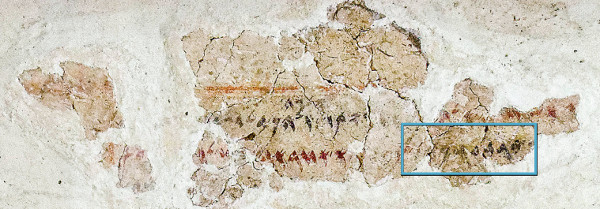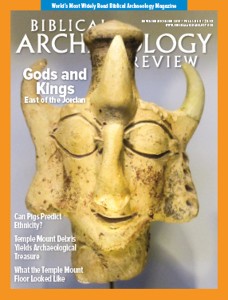Deir ‘Alla Inscription
Sidebar to: Ammon, Moab and Edom: Gods and Kingdoms East of the Jordan

The east Jordan Valley site of Deir ‘Alla was the place of a Late Bronze Age (1550–1200 B.C.E.) sanctuary and is best known for its Iron Age plaster inscription relaying a vision of doom pronounced by “Balaam, son of Beor,” the prophetic figure who appears in Numbers 22–24 and other Biblical texts. (Part of the inscription mentioning Balaam is pictured above; the box marks the end of Balaam’s name and his patronymic: “[Balaa]m son of Beor.”) Both the Balaam inscription and its archaeological context (radiocarbon-dated to c. 800 B.C.E.) lack any features supporting a distinctly Israelite cultural or political identity for the site during this period. Although the inscription’s letter forms relate to the Ammonite national script that began developing at this time, the inscription’s language is not Ammonite but, rather, in keeping with the site’s location, somewhere on the dialect continuum among Hebrew, Ammonite, Moabite and Aramaic of the surrounding kingdoms. Briefer inscriptions are written in standard Aramaic of the day. These factors combine to suggest that Deir ‘Alla during the time of the Balaam inscription (c. 800 B.C.E.) fell under the hegemony of Damascus, following Hazael’s extensive conquests in the region and claims over all Israelite territory in Transjordan as stated in 2 Kings 10:32–33.
Already a library member? Log in here.
Institution user? Log in with your IP address.

